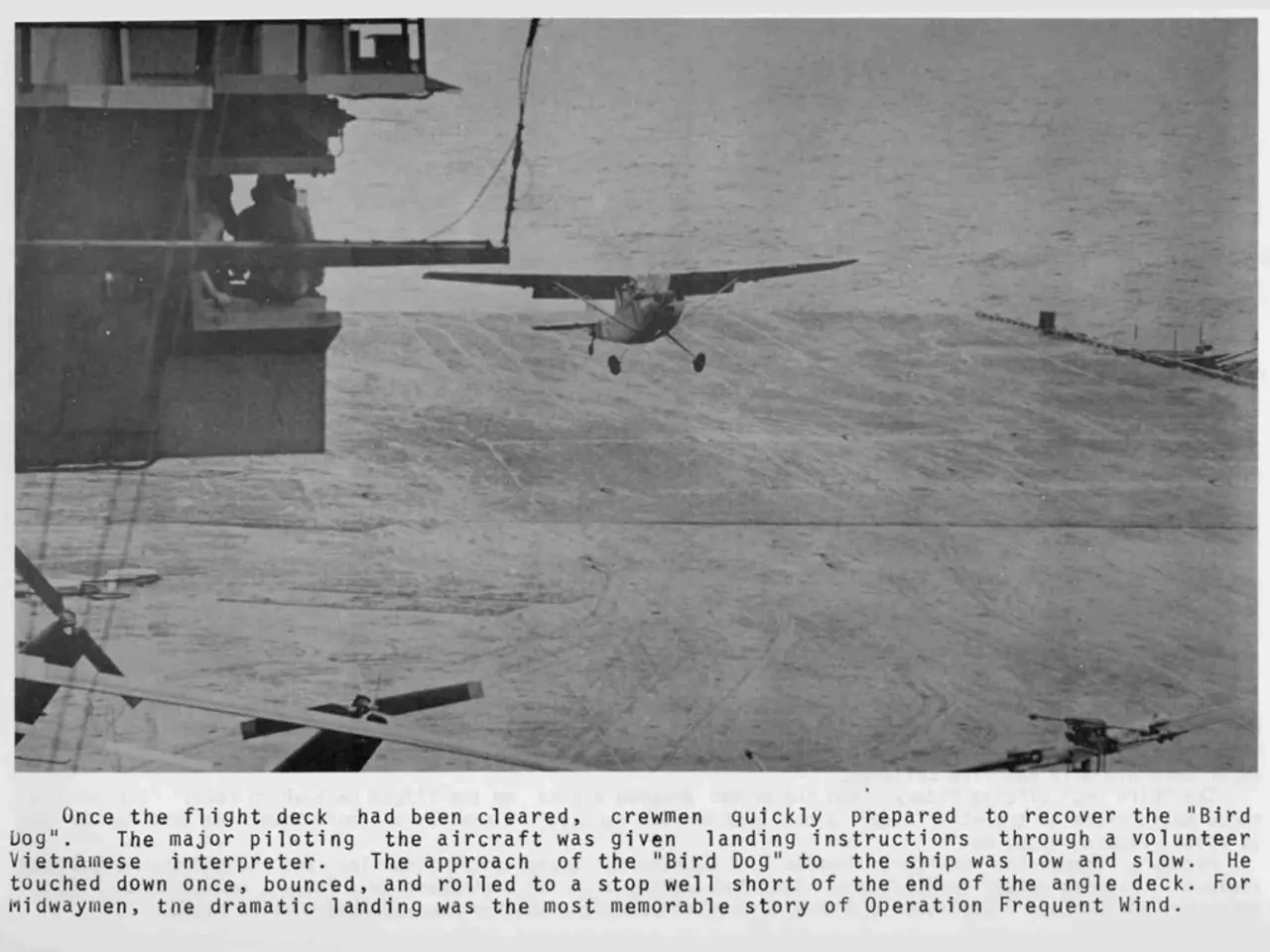Fearless Air Combat Leader, Georges Guynemer, in World War 1
Georges Guynemer, born on Christmas Day in 1894 in Paris, France, became one of the most celebrated military pilots of World War I. Known as "The ace of aces," "the knight of the air," and "the angel of victory," Guynemer is regarded as a hero of the war.
Despite being rejected five times when he tried to join the air force at the start of the war due to his weak physical condition, Guynemer's determination led him to eventually serve his country. He made his first professional flight on February 17, 1915, and graduated from aviation school in Pau later that year. His first plane, a L monoplane, was previously operated by Charles Bonnard.
On July 19, 1915, Guynemer achieved his first aerial victory, destroying a German aircraft during combat. This marked the beginning of a remarkable career, with Guynemer going on to claim 53 to 54 confirmed aerial victories, making him one of France's top aces.
Guynemer effectively flew with three different aircraft: the two-seater "Morane-Saulnier," the single-place aircraft "Nieuport," and the "Spad" airplane. He was particularly fond of the SPAD S.XIII model, which he flew on September 11, 1917.
One of Guynemer's most significant achievements occurred on February 8, 1917, when he became the first Allied pilot to destroy a German bomber plane. This victory was followed by many more, earning him promotions to the rank of captain and the fourth rank of the "Legion of Honor."
Guynemer's unfading dream was to wreck 50 enemy aircrafts, a goal he achieved during the war. Despite being shot down eight times during combat, he continued to fight bravely.
One of his most notable missions took place near Poelkapelle in western Belgium, where he ran over a German reconnaissance aircraft. However, tragedy struck on September 11, 1917, when Guynemer was shot down during a patrol. Despite German claims of shooting down his aircraft, neither the aircraft nor Guynemer were found. He was just 23 years old at the time of his death.
Guynemer's friend, whose parent was from the Panhard Motor Company, introduced him to the internal combustion engine. This early exposure to mechanical engineering fueled Guynemer's interest in flight and space science, which he nurtured while attending Stanislas High School.
Guynemer's legacy lives on, not just as a symbol of bravery and determination, but also as a reminder of the impact one person can have in the face of adversity. His story continues to inspire generations, standing as a testament to the indomitable spirit of those who fought in World War I.
[1] "Georges Guynemer." Encyclopædia Britannica, Encyclopædia Britannica, Inc., 11 Mar. 2021, https://www.britannica.com/biography/Georges-Guynemer. [2] "Georges Guynemer." BBC History, BBC, 1 Nov. 2018, http://www.bbc.co.uk/history/worldwars/wwone/guynemer_01.shtml. [3] "Georges Guynemer." History.com, A&E Television Networks, LLC, 2010, https://www.history.com/topics/world-war-i/georges-guynemer. [4] "Georges Guynemer." Military Factory, Military Factory, 2021, https://www.militaryfactory.com/aircraft/detail.asp?aircraft_id=102. [5] "Georges Guynemer." Britannica, The Editors of Encyclopaedia Britannica, 2021, https://www.britannica.com/biography/Georges-Guynemer/Victories-and-decorations.
Despite Guynemer's initial rejections in the air force due to health issues, his relentless spirit paved the way for a career that significantly impacted the aviation industry. His achievements as a pioneering aviator, with a total of 53 to 54 confirmed aerial victories, helped shape the finance and aerospace sectors in France. Today, Guynemer stands as a noteworthy figure in the transportation and aviation industries, inspiring new generations with his heroic exploits.








